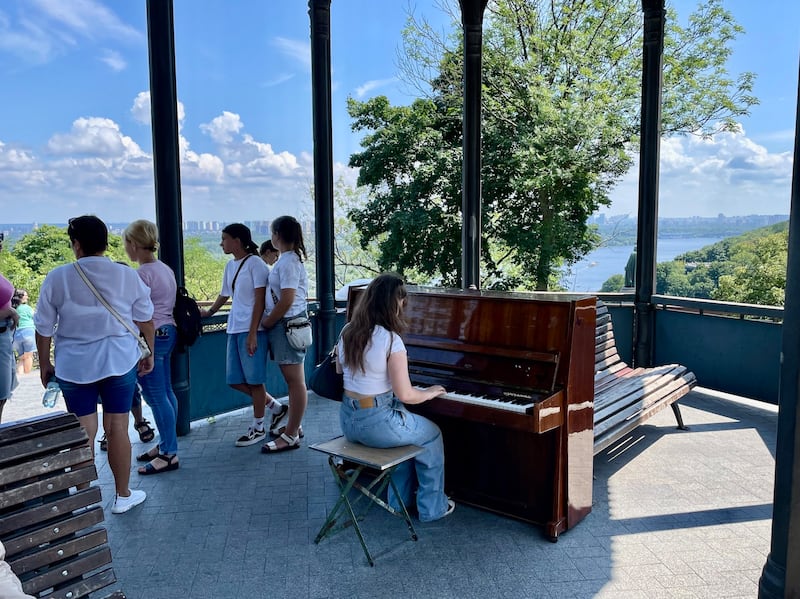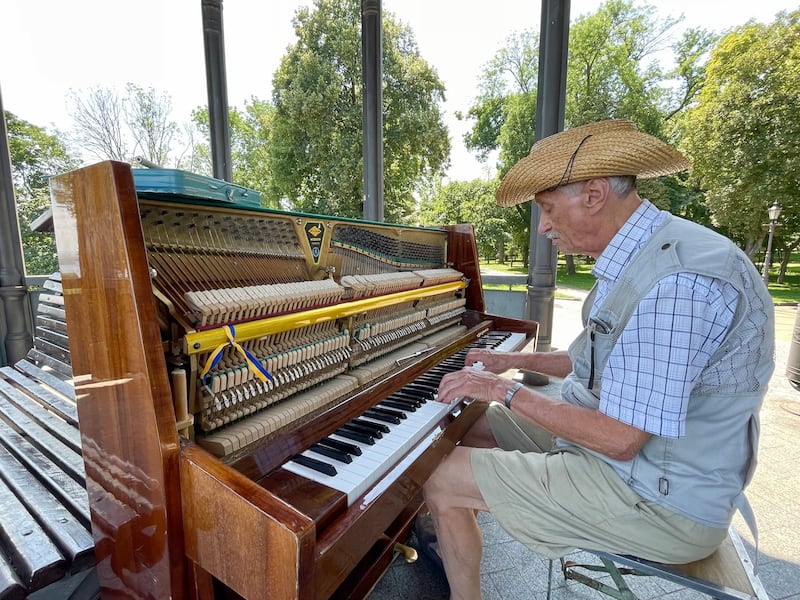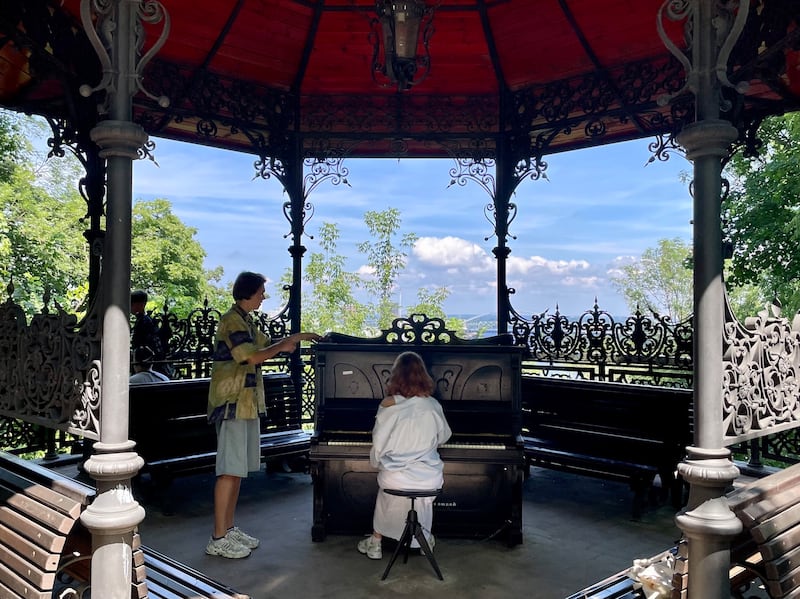Dmitry Kulyechov has tuned pianos in Kyiv for about 40 years, but one job a decade ago was very different to all the rest.
When hundreds of thousands of Ukrainians took to the streets of Kyiv and other cities in winter 2013-14, they were not only demanding more democracy, less corruption, closer ties to the West and an end to centuries of Russian domination.
Many of them also wanted to show that they were freer, more creative and less afraid than Ukraine’s Kremlin-backed government of the time and the riot police who tried to crush the rallies on Maidan square in central Kyiv, which was the epicentre of the revolution.
One day during that historic and ultimately bloody winter, when the middle of the capital was a giant protest camp and occasional battlefield, Kulyechov was asked to tune a piano for the demonstrators that had been hoisted onto a burned-out truck just metres from police lines.
“I climbed on to the truck and stood there – there was no stool to sit on yet – and played the piano a bit to check it, and then tuned it. The police were just over there, as close as those people are to us now,” he says, gesturing to a couple strolling through a Kyiv park that overlooks a broad sweep of the Dnipro river.

“The protesters brought five or six pianos to Khreshchatyk,” he recalls, referring to the Kyiv avenue that cuts through Maidan and was part of the barricaded and often besieged protest camp that winter. “Various people played them – I saw them on TV. And one evening my daughter saw a report that showed me tuning that piano.”
The pianos were painted in the blue and yellow colours of Ukraine and at least one was emblazoned with the 12 golden stars that are an emblem of the European Union, to highlight the protesters’ determination to finally escape Russia’s orbit.
The sight and sound of men and women, young and old, playing a piano before lines of riot police wearing identical dark uniforms and helmets and carrying truncheons and shields, helped inspire protesters who would ultimately pay a brutal price for their defiance, when dozens were killed before Ukraine’s then leaders fled to Russia.
Street pianos became a symbol that winter of Ukraine’s fight for lasting independence and democracy and, a decade on, Kulyechov still regularly attends to several that sit in parks and on the pavement around central Kyiv, where they are played by passing locals, visitors to the city and musicians trying to make a little money.

“The street musicians call me when a piano needs tuning,” he says. “I might do it at 8 o’clock in the morning and I warn them that it could be out of tune again by the time they play it that evening. Over the day the piano warms up and the heat expands the strings, and later they contract,” he explains, during a record-breaking Kyiv heatwave when daytime temperatures were well above 30 degrees.
“All weather is bad for a piano – heat, rain, cold. The best thing for a piano is to sit somewhere in a nice cellar where no one plays it.”
Kulyechov played several instruments growing up, but leaving his violin on a bus one day would lead him to his future profession. He asked repairers in the Kyiv Conservatory workshop if they had a violin available; they didn’t, but invited him in and told him that he could keep a damaged violin if he fixed it.

He found he had a talent for the work, but still couldn’t tune his own piano at home. So he asked a Conservatory piano tuner called Volodya to “teach him a bit about it”.
“Volodya said no, he couldn’t do that because – like being pregnant – it’s not something you can do ‘a bit’. Either you’re serious about it or you don’t do it all,” Kulyechov says.
He still gets satisfaction from making a piano sound its best, but fears that his is a dying profession, “like a repairer of umbrellas or cigarette lighters”.
All Ukraine’s piano factories have shut down, digital models out-sell traditional acoustic versions, electronic gadgets now make tuning easier for the amateur and few young people want to devote years to becoming an expert, says Kulyechov (78), much of whose work is for theatres and music schools.
“Now everything is unpredictable, so people live for today. They don’t know what will happen tomorrow or next week, never mind in a few years,” he says of wartime Ukraine. “You’d be better off learning to be a welder now,” he adds, only half-jokingly. “At least you’d know that you’ll be needed and will always have work.”

















